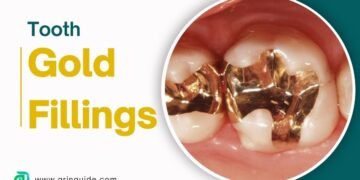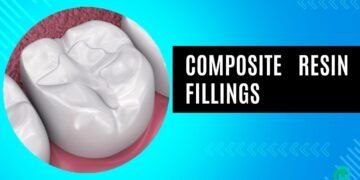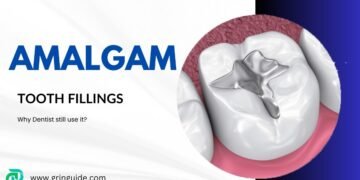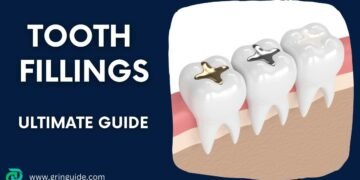Table of Contents
Tooth decay, also known as dental caries or cavities, is a common oral health problem that affects people of all ages. It occurs when the enamel, the outer layer of the tooth, is damaged and starts to break down. If left untreated, tooth decay can lead to pain, infection, and even tooth loss.
In this article, we will explore the causes, symptoms, and prevention strategies for tooth decay.
Causes of Tooth Decay
Several factors contribute to the development of dental caries. The primary cause is the presence of bacteria in the mouth. Our mouths are home to various types of bacteria, some of which are harmful to our teeth.
When we consume sugary or starchy foods, these bacteria feed on the sugars and produce acids. Over time, these acids can erode the enamel and create cavities.

Poor oral hygiene is another significant cause of tooth decay. If we do not brush and floss regularly, plaque can build up on our teeth. Plaque is a sticky film that contains bacteria and can lead to tooth decay if not removed.
Additionally, certain lifestyle habits, such as smoking or excessive alcohol consumption, can increase the risk of dental caries.
Symptoms
The symptoms of dental caries can vary depending on the severity of the condition. In the early stages, tooth decay may not cause any noticeable symptoms. However, as it progresses, you may experience:
- Tooth sensitivity: You may feel pain or discomfort when consuming hot, cold, or sweet foods and beverages.
- Toothache: Persistent or intermittent toothache is a common symptom of tooth decay.
- Tooth discoloration: The affected tooth may develop white, brown, or black spots.
- Bad breath: If tooth decay leads to an infection, it can cause persistent bad breath.
- Pus or discharge: In advanced cases, you may notice pus or discharge around the affected tooth.
- Difficulty biting certain foods.
If you experience any of these symptoms, it is essential to visit a dentist for a proper diagnosis and treatment.
Prevention
Preventing tooth decay starts with maintaining good oral hygiene practices. Here are some tips to help prevent tooth decay:
- Brush your teeth twice a day: Use a fluoride toothpaste and a soft-bristled toothbrush to brush your teeth for at least two minutes each time.
- Floss daily: Flossing helps remove plaque and food particles from between your teeth and along the gumline.
- Limit sugary and acidic foods: Reduce your consumption of sugary and acidic foods and beverages, as they can contribute to tooth decay.
- Drink plenty of water: Water helps rinse away food particles and bacteria from your mouth.
- Visit your dentist regularly: Regular dental check-ups and cleanings are crucial for maintaining good oral health and detecting any signs of tooth decay early on.
- Consider dental sealants: Dental sealants are protective coatings applied to the chewing surfaces of the back teeth, where decay often begins.
By following these preventive measures, you can significantly reduce your risk of developing tooth decay.
Treatment for Tooth Decay
If cavities are detected, your dentist will recommend an appropriate treatment based on the severity of the condition. The treatment options may include:
- Dental fillings: For mild to moderate tooth decay, the dentist may remove the decayed portion of the tooth and fill it with a dental filling.
- Dental crowns: If the decay has caused significant damage to the tooth, a dental crown may be necessary to restore its shape and function.
- Root canal therapy: If the decay has reached the pulp of the tooth and caused an infection, a root canal may be required to remove the infected tissue and save the tooth.
- Tooth extraction: In severe cases where the tooth cannot be saved, extraction may be necessary. The extracted tooth can then be replaced with a dental implant or bridge.
It is important to address tooth decay promptly to prevent further complications and preserve your oral health.
Tooth Decay Process
Let’s explore the fascinating process of tooth decay and how it can be managed. Understanding this process is essential for maintaining good oral health.
- Stage 1: Initial Demineralization
- Enamel begins to lose minerals due to acid attacks.
- A white spot appears on the tooth, indicating early decay.
- At this point, tooth decay can be stopped or reversed.
- Stage 2: Enamel Decay
- Enamel breaks down further, leading to brownish spots.
- Small holes (cavities) may form and require dental fillings.
- Stage 3: Dentin Decay
- Dentin, softer than enamel, becomes affected.
- Sensitivity occurs, especially with hot or cold foods.
- Stage 4: Pulp Damage
- The innermost layer (pulp) contains nerves and blood vessels.
- Swelling and irritation occur if the pulp is damaged.
- Pressure on nerves leads to pain.
- Stage 5: Abscess formation and potential gum disease
Understanding Tooth Structure
Certainly! Let’s delve into the fascinating world of tooth structure. Our teeth are remarkable structures, each with distinct layers that contribute to their function and durability. Here’s a breakdown of the essential components:
1. Enamel:
- Outermost Layer: Enamel is the hard, protective outer layer of the tooth.
- Composition: It consists mainly of hydroxyapatite crystals, making it the hardest substance in the human body.
- Function: Enamel shields the tooth from wear, acids, and temperature changes.
- Color: Typically, translucent or slightly off-white.
2. Dentin:
- Beneath Enamel: Dentin lies just beneath the enamel.
- Composition: Dentin is a calcified tissue containing tubules.
- Function: Dentin provides support and transmits sensations (such as hot or cold) to the pulp.
- Color: Yellowish or ivory.
3. Pulp:
- Innermost Core: The pulp is located in the central chamber of the tooth.
- Composition: It contains nerves, blood vessels, and connective tissue.
- Function: The pulp nourishes the tooth during development and senses pain or damage.
- Color: Red or pink.
4. Cementum:
- Covers Roots: Cementum covers the roots of the tooth.
- Composition: It’s similar to dentin but contains fewer tubules.
- Function: Cementum anchors the tooth to the jawbone via the periodontal ligament.
- Color: Light yellow.
5. Periodontal Ligament (PDL):
- Around Roots: The PDL surrounds the tooth roots.
- Composition: It’s made of collagen fibers.
- Function: The PDL attaches the tooth to the alveolar bone and allows slight movement during chewing.
- Color: Not visible (within the gum tissue).
6. Alveolar Bone:
- Tooth Socket: The alveolar bone forms the tooth socket.
- Composition: It’s dense bone tissue.
- Function: The alveolar bone supports and houses the tooth roots.
- Color: Not visible (within the jawbone).
Remember, maintaining good oral hygiene—such as regular brushing, flossing, and dental check-ups—is crucial for preserving these intricate structures and ensuring healthy teeth.
Conclusion
Tooth decay is a common dental problem that can have serious consequences if left untreated. By understanding the causes, recognizing the symptoms, and implementing preventive measures, you can significantly reduce your risk of developing dental caries.
Remember to maintain good oral hygiene practices, visit your dentist regularly, and seek prompt treatment if you experience any signs of cavities. Taking care of your teeth and gums is essential for maintaining a healthy and beautiful smile.
FAQs
-
What is Tooth Decay?
Tooth decay, also known as dental caries or cavities, is the destruction of tooth enamel, the hard, outer layer of your teeth.
-
What Causes Tooth Decay?
The main cause of tooth decay is plaque, a sticky film of bacteria that forms on your teeth. When you eat or drink foods containing sugars, the bacteria in plaque produce acids that attack tooth enamel.
-
What are the Symptoms of Tooth Decay?
Tooth sensitivity to sugary, hot, or cold foods.
Constant tooth pain.
White or dark spots on the teeth.
Bad breath.
Loose fillings.
Cavities.
Difficulty biting certain foods.
Abscesses causing pain, facial swelling, or fever. -
How Can Tooth Decay be Prevented?
Prevention includes brushing your teeth twice a day with fluoride toothpaste, flossing daily, eating nutritious and balanced meals, and limiting snacking.
-
How is Tooth Decay Treated?
Treatment depends on the severity and can range from fluoride treatments and fillings to root canals and crowns.
-
Can Tooth Decay Affect Overall Health?
Yes, without treatment, tooth decay can cause pain, infection, and tooth loss. It can also affect your overall health, including problems with speaking, eating and learning.
Resources:









